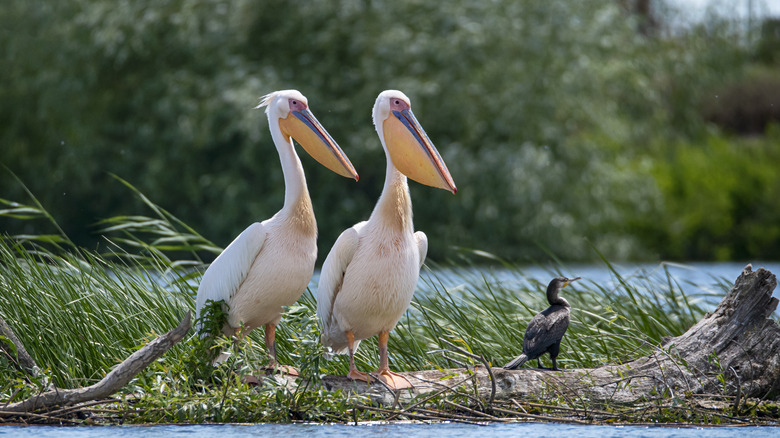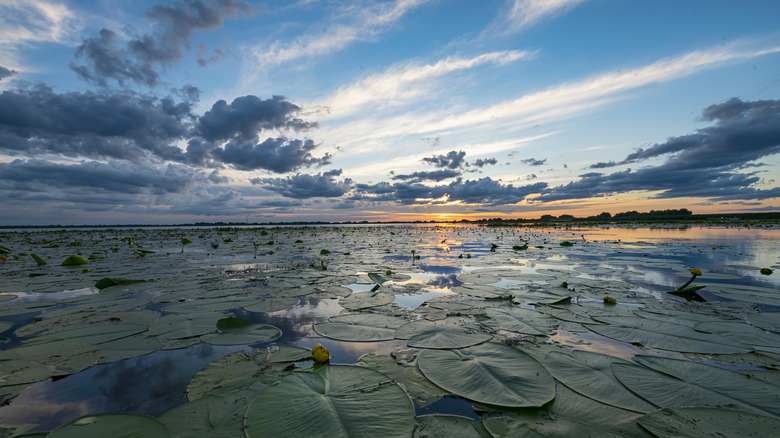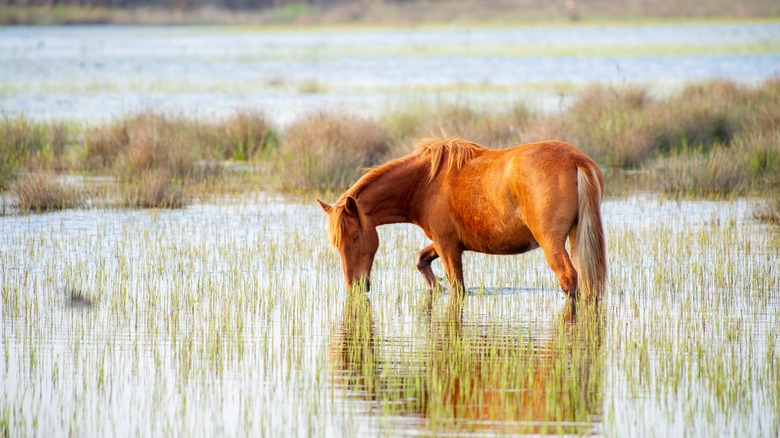This Underrated European Destination Is A Great Budget-Friendly Spot For Nature Lovers
Many great rivers run through Europe. It's hard to imagine Paris without picturing the Seine meandering past the Eiffel Tower or Notre Dame Cathedral. Meanwhile, the nearby countries of Switzerland, Germany, and The Netherlands are home to the Rhine, one of Europe's most important waterways. Also originating in Western Europe is the Danube.
From its source in Germany's Black Forest, the mighty Danube either winds through or forms part of the border of 10 countries, visiting four capital cities along the way (Vienna, Bratislava, Budapest, and Belgrade) before reaching its final destination in the Black Sea. There, between Romania and Ukraine, the grand old river fans out into the Danube Delta and becomes a true haven for nature lovers. While it may not be as well known as Australia's Great Barrier Reef or the Galapagos Archipelago in Ecuador, it rivals them in terms of sheer biodiversity, providing a home for over 5,500 species of flora and fauna. It's also a great destination for budget travelers because Romania is one of the most affordable countries in the European Union.
The Danube Delta is a vast wetland that spreads out from three main channels of the river that have given their names to their respective ports. Chilia in the north where the Danube marks the border with Ukraine, Sulina at the easternmost point of Romania, and Sfântu Gheorghe to the south with its long sandy beaches. That's quite a significant area, so what are the must-see highlights on a visit to the region?
Water is the best way to travel in the Danube Delta
The Danube Delta is home to around 15,000 people but settlements are mostly small towns and villages, so the city of Tulcea makes an ideal jumping-off point in the region if you want a choice of amenities. There you will find plenty of accommodation options including some basic guesthouses in the range of $30 to $40 per night. The city also has quite a few restaurants to choose from that won't put a massive dent in your wallet, including several along the banks of the Danube where main courses average around $8 to $10. If you don't need a fancy sit-down meal, you can easily half that amount by eating on the fly with a slice of pizza or a kebab from a fast food joint.
The three branches of the Danube provide great access to the Delta and, with 2,200 square miles of marshland, traveling by small boat is the best way to navigate the lakes and canals without disturbing the wildlife. Along the way, you will see an impressive array of birds including the pelican, pygmy cormorant, and many migratory species including flamingoes. Guided boat tours and birdwatching tours can be quite expensive, with trips including accommodation ranging up to around $500 per person. A far cheaper option is to make Tulcea your base and take a group day trip instead, which will only set you back around $85 each.
The Danube Delta is rich in wildlife and local culture
There is also plenty of wildlife of the non-winged variety living in the Danube Delta. The Letea Forest is the northernmost subtropical forest in Europe and provides a home for thousands of wild horses; here you can enjoy the spectacle of herds running free in the meadows or splashing about in the Black Sea. In the center of the region, you will find the Caraorman Forest, a protected area where oak trees grow on sand banks. A range of wildlife including falcons, eagles, wild boars, wolves, and wildcats can be spotted here.
To experience one of the places where the Danube River terminates, one of the most attractive locations is Gura Portitei, a former fishing village situated on a narrow spit of land on the shores of the Black Sea. Beach bungalows with access to the facilities of the nearby holiday village cost as low as $64 per night.
A visit to the Danube Delta isn't complete without experiencing the local culture and cuisine. Many inhabitants make their living from fishing, and fish are an important part of the local menu. The region's hearty fish soup is unique for providing a first and second course; the liquid is served as a starter followed by the chunks of fish that were cooked in it. Most hotels in the area serve fish-based meals, but the best and cheapest way to sample it is to get invited to lunch by some locals.


